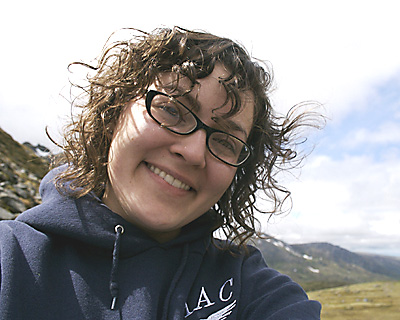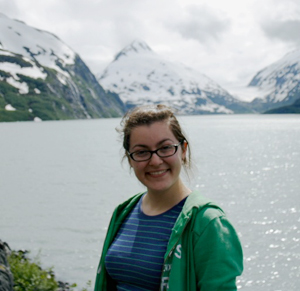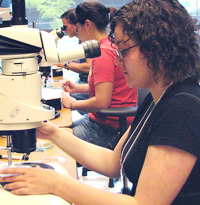Anna Mazzarella, Fifth Year Masters

Anna Mazzarella (’09), MA 2010, accepted a Ph.D. Fellowship at the Centre for Ecological and Evolutionary Synthesis (CEES) at the University of Olso, Norway in 2010 with supervisor L. Asbjørn Vøllestad. Her PhD was awarded in 2015 for her thesis with the title “Adaptation to freshwater in the threespine stickleback: New perspectives on old questions.” She is now working at the University of Oslo as the Scientific Coordinator for two Nordic centers, NorMER (Nordic Centre for Research on Marine Ecosystems and Resources under Climate Change) and GreenMAR (Green Growth Based on Marine Resources: Ecological and Socio-Economic Constraints). Anna is very excited to use her PhD in biology as well as her MA and undergraduate degrees in Biology and Studio Art from Clark University in her new job. Read more about her new work here: http://www.mn.uio.no/cees/english/people/phd/annamaz/

My greatest research interests lie in the fields of evolution, genetics/genomics, and relating these together to animal behavior. I joined the Foster/Baker laboratory in my first semester at Clark, and in addition to helping with basic fish husbandry (or in other words, feeding the little guys!), I have worked on several projects since. I’ve done dissections and phenotype measurement, a lot of DNA extractions, run many different animal behavior trials, and done cortisol extractions. Because of my combined interests, Dr. Foster arranged to have me attend the Stanford University Stickleback Molecular Genetics Course funded by the National Institutes of Health. It was an amazing experience. I learned a lot of new skills, including microinjection techniques on stickleback embryos, how to analyze QTL mapping results and some methods of bioinformatics using genome browsers. I was the only undergraduate attending the course, which was daunting at first, but I had a wonderful time. I’ve been busy ever since then integrating the things I learned into my coursework and laboratory work back here at Clark. Right now I am working on a project in which I’m looking at population differences the cortisol responses of male stickleback exposed to foraging groups. At the end of this semester I’ll be starting work on my Masters’ in which I will hope to use molecular techniques to investigate genomic changes in response to stress.
For the past two summers, I have also had the chance to learn in the field by going to Alaska to help out with all the projects laboratory members are conducting. In Alaska I’ve done laboratory research (including more animal behavior trials and also making crosses – something that everyone else seems to hate but I actually kind of like!), and this past summer I also did a lot of field collecting. Another reason I love going to Alaska with the laboratory is that in both years I was the designated photographer. It’s an amazing experience to learn so much about my study system while wandering (and sometimes wading) through the gorgeous Alaskan landscape.

Outside the lab:
I am working toward a double major in biology and studio art, hence my interest in combining biology and photography. I am also a photographer for Clark’s Admissions department, and helped photograph four works of art produced by one of Elli Crocker’s classes for the Lasry Biosciences Building. These photographs were used on one of the Clark University holiday cards. As for other extracurricular activities, I’m the editor-in-chief and photography editor for STIR Magazine (which is a student-run and -produced campus publication), I am one of two co-directors of Clark’s only all-female a cappella group called the Counterpoints, and I am a proctor and Assistant Teacher in the photography department. Of course, the projects I always enjoy the most are those that allow me to do both biology and photography, so going to Alaska with the laboratory usually tops the charts in things that I think are a lot of fun.
Awards:
Lise Anne and Leo E. Beavers II Research Fellow, summer 2008